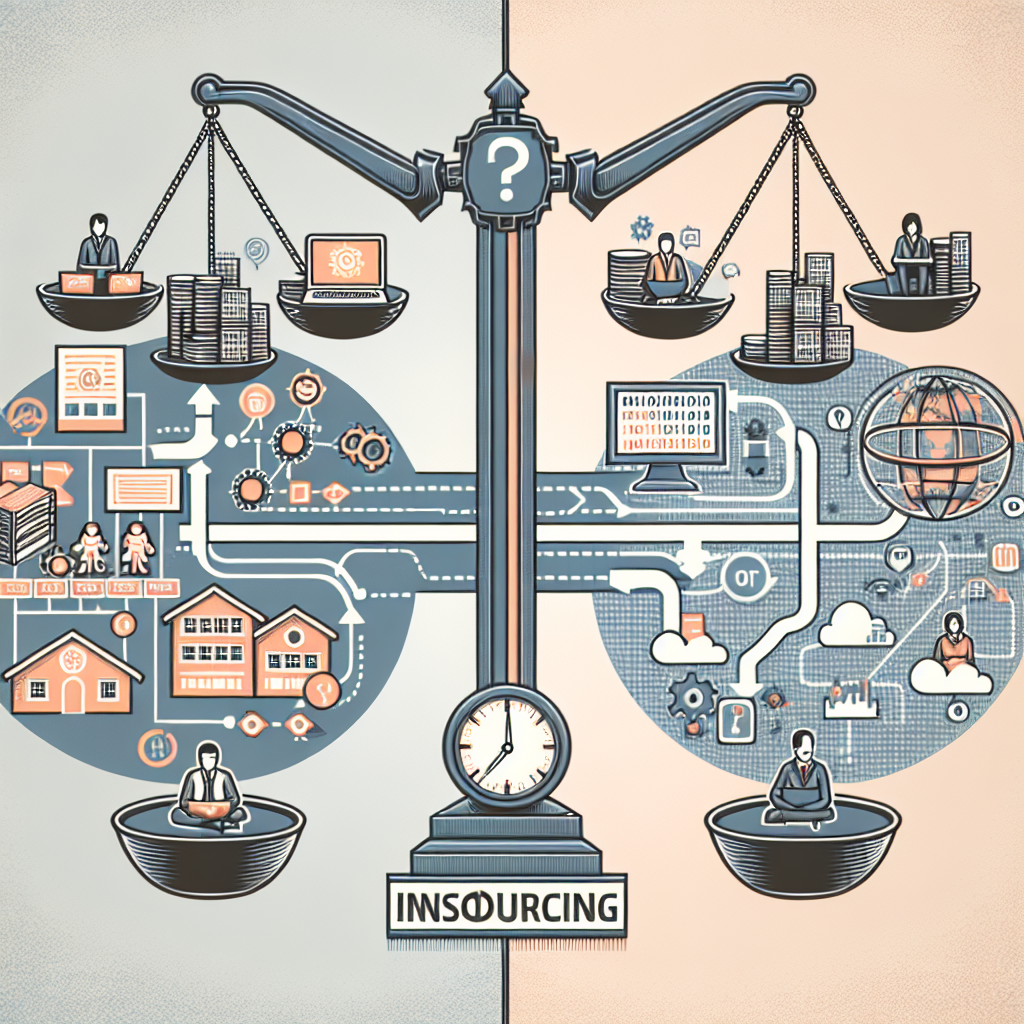Your cart is currently empty!
Outsourcing vs Insourcing: Making the Right Decision for Your IT Needs

In today’s fast-paced and ever-changing business landscape, companies are constantly faced with the decision of whether to outsource or insource their IT needs. Both options have their own set of advantages and disadvantages, and choosing the right approach can have a significant impact on a company’s bottom line and overall success.
Outsourcing IT services involves hiring a third-party provider to handle all or part of a company’s IT functions. This can include tasks such as software development, network management, help desk support, and cybersecurity. Outsourcing can be a cost-effective solution for companies that lack the resources or expertise to handle these tasks in-house. By outsourcing, companies can access a wider talent pool, benefit from the expertise of specialized professionals, and reduce their overall IT costs.
On the other hand, insourcing involves keeping all IT functions in-house and relying on internal staff to manage and maintain the company’s technology infrastructure. Insourcing can provide companies with greater control over their IT operations, as well as the ability to tailor solutions to meet specific business needs. However, insourcing can be more costly and time-consuming, as companies must invest in hiring and training IT staff, as well as maintaining and upgrading their technology infrastructure.
So, how can companies determine whether outsourcing or insourcing is the right decision for their IT needs? The answer largely depends on the company’s specific goals, resources, and constraints. Here are some key factors to consider when making this decision:
1. Cost: Outsourcing can often be a more cost-effective solution for companies with limited budgets or those looking to reduce IT expenses. However, companies should carefully evaluate the long-term costs and benefits of outsourcing versus insourcing to ensure they are making the most financially sound decision.
2. Expertise: Outsourcing can provide access to specialized professionals with expertise in a particular area of IT, such as cybersecurity or software development. Insourcing, on the other hand, allows companies to build and develop their internal IT team to meet their specific needs and requirements.
3. Control: Insourcing provides companies with greater control over their IT operations, as they can directly manage and oversee all aspects of their technology infrastructure. Outsourcing, on the other hand, requires companies to trust third-party providers to deliver on their promises and meet their expectations.
4. Flexibility: Outsourcing offers companies the flexibility to scale their IT services up or down as needed, without the need to invest in additional resources or infrastructure. Insourcing, on the other hand, may limit a company’s ability to quickly adapt to changing business requirements.
Ultimately, the decision to outsource or insource IT services will depend on a company’s unique circumstances and objectives. Companies should carefully weigh the pros and cons of each approach, and consider factors such as cost, expertise, control, and flexibility when making this important decision. By choosing the right IT strategy for their needs, companies can ensure they are maximizing their technology investments and driving business growth and success.

Leave a Reply